Orville and Wilbur
For the Wright Brothers the sky was the limit but controls were how you got there
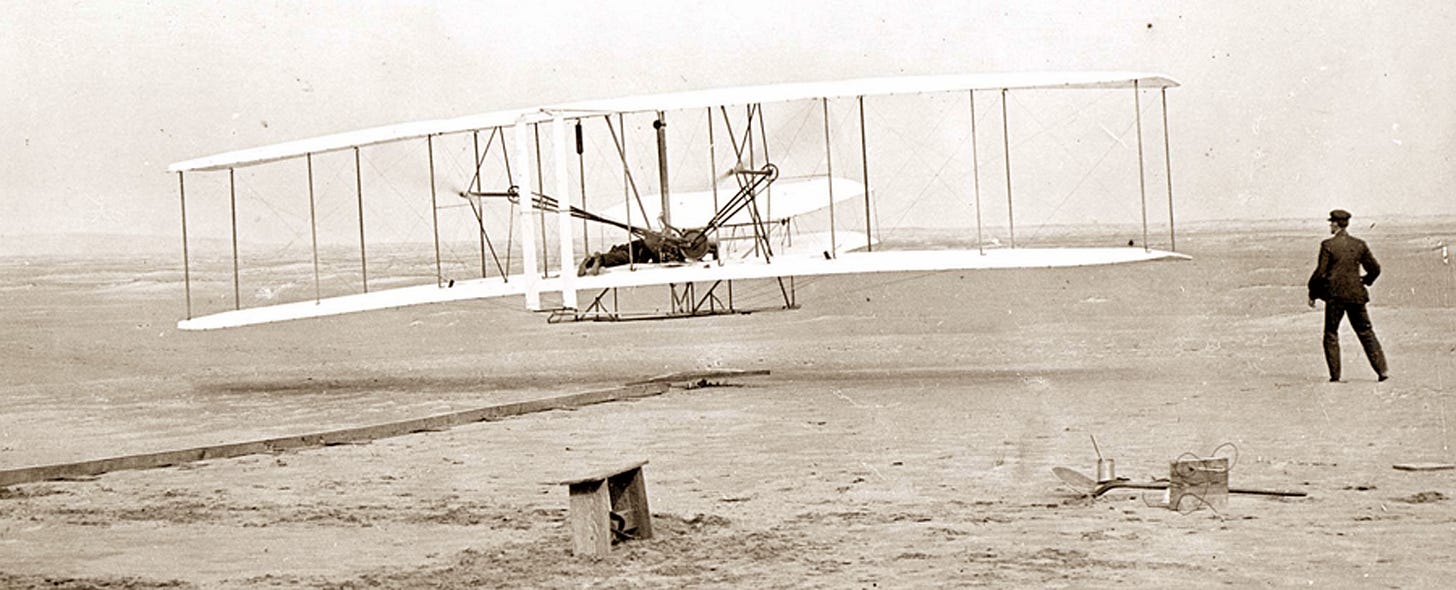
Most of us are long familiar with that famous photograph.
The Wright brothers had just launched their flying machine above the beach at Kitty Hawk, North Carolina, proving without a doubt that man could leave the surface of the earth and move through the air under his own power.
That had been a dream longed for across many thousands of years. People had watched birds soar overhead while they themselves were firmly grounded, wishing to know what that experience was like and yearning to speed across the sky with such effortless ease.
That, finally, was made possible by the untiring efforts of those two brothers from Dayton, Ohio, who labored in their bicycle shop to create the world’s first true flying machine.
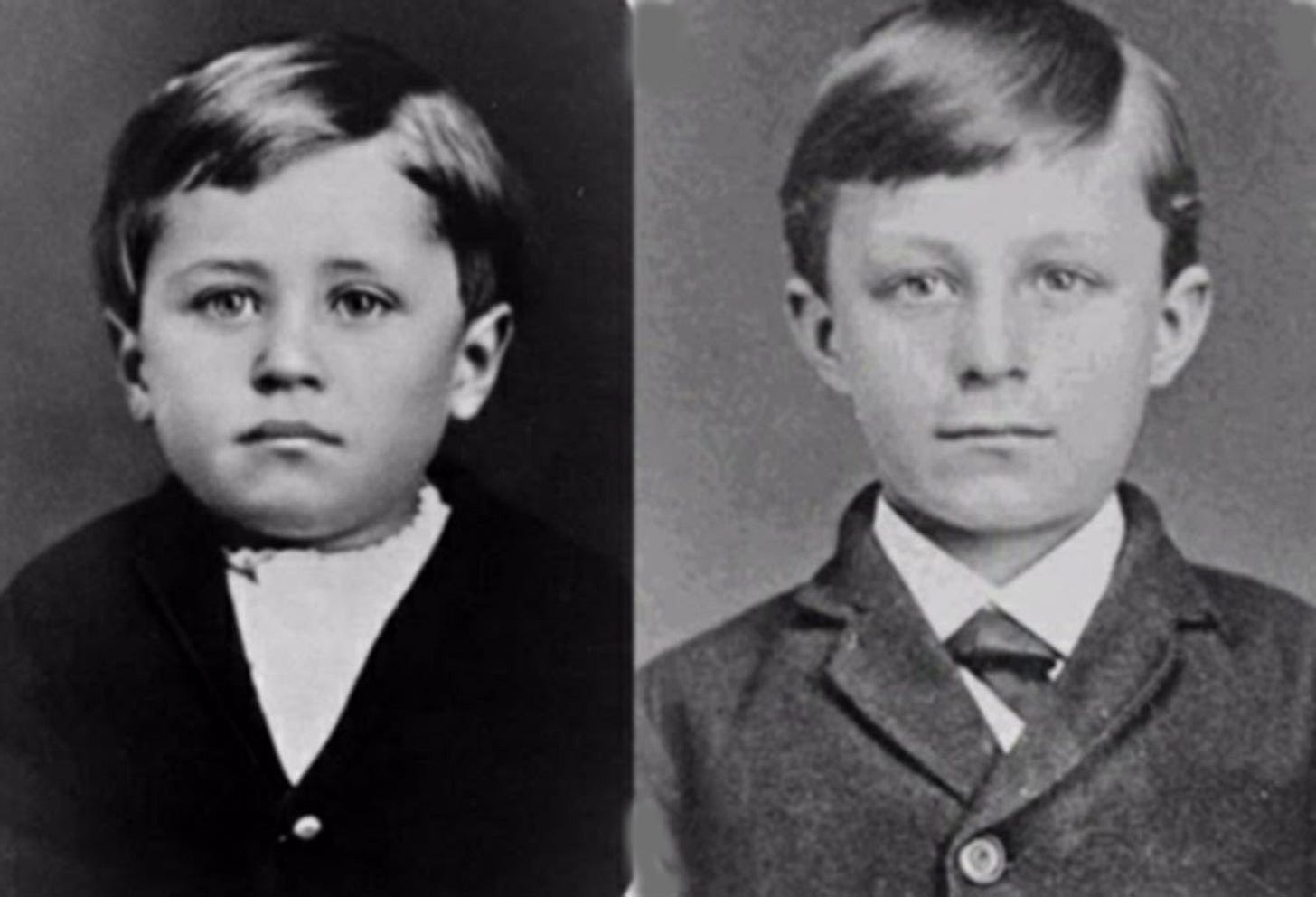
Both boys were drawn to mechanical things. Their interest in flying started when their father brought home a toy helicopter, made from wood and cloth with a rubber band driven propeller. It rose off the floor, drifted across the room, bumped into a wall and descended quietly. This began their shared passion for heavier-than-air machines.
Orville was fascinated by mechanical devices and later would develop a printing press. He and Wilbur subsequently formed their own newspaper to which enterprise they soon added bicycle repair and then expanded their work to include motors and other machinery. Both of these young men possessed a bulldog tenacity when trying to solve mechanical problems.
That very tenacity was the thing which got the brothers airborne ahead of others who were trying to perfect their own flying machines. They spent years developing and methodically testing, over and over, ways to control the flight of gliders which they launched from Kill Devil Hill near Kitty Hawk, NC.
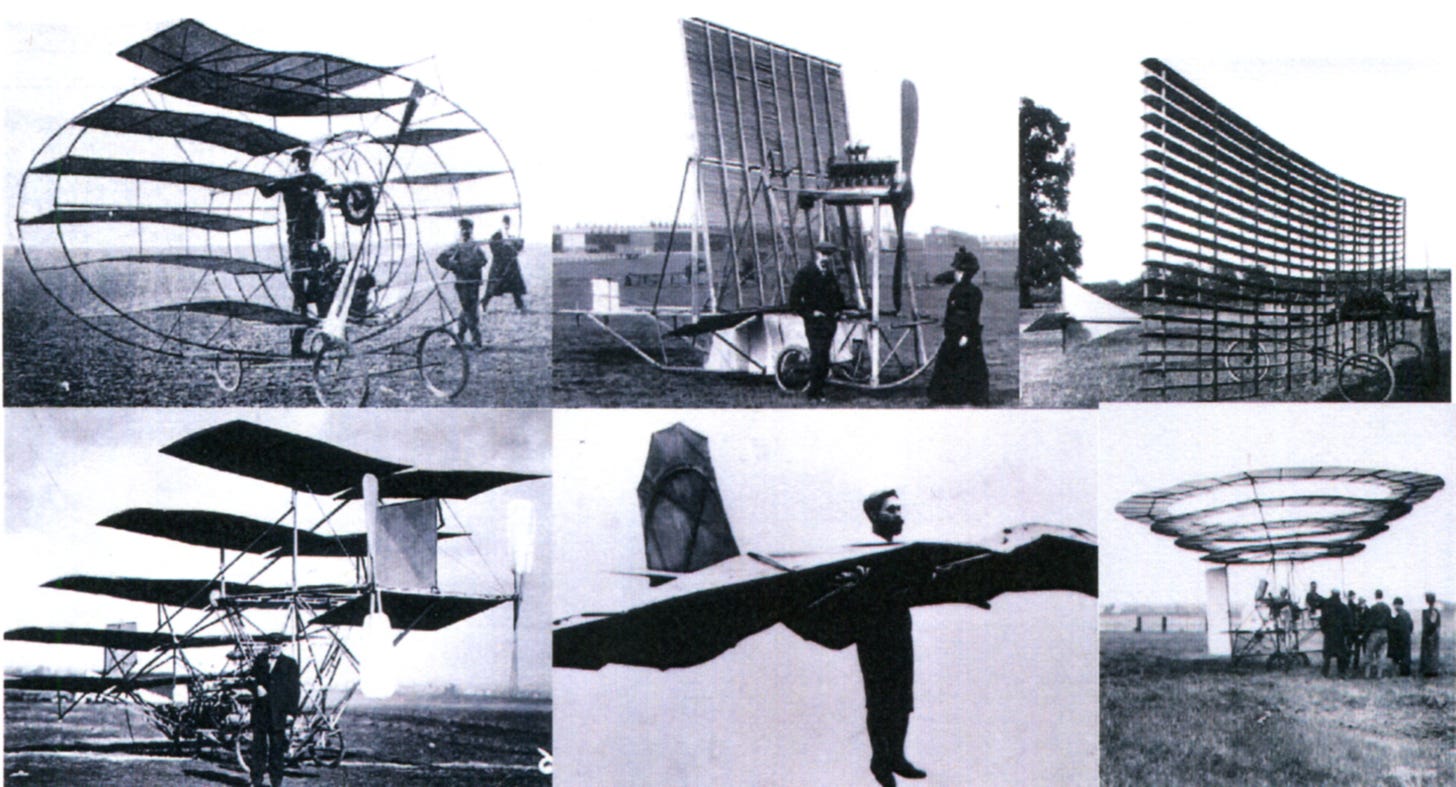
They had learned a lot from their experience in the bicycle shop, most importantly that an unstable vehicle such as an airplane could actually be balanced and controlled with repeated practice.
You don’t learn to ride a bicycle on your first attempt but only after learning to counter the effects of becoming unbalanced and developing the skill to correct a tilt too far to one side while staying in forward motion. Bicycles are unstable if they aren’t in motion and the Wrights knew that with motion through the air you should be able to stabilize the flight of an airplane.
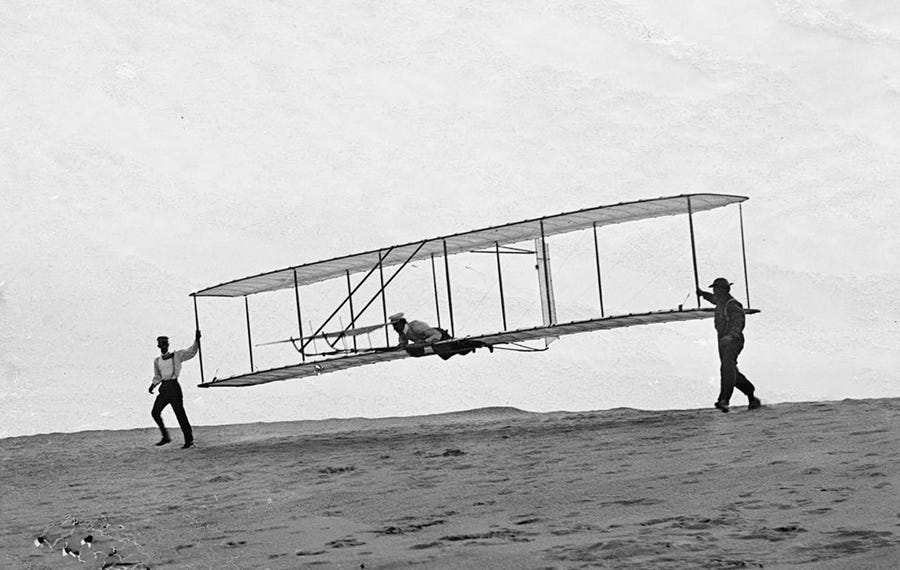
The brothers had a lot of respect for other aircraft designers, chief among them Otto Lilienthal, a German pioneer of aviation who made the first well-documented, repeated and successful flights with gliders. Lilienthal was killed in August, 1896, when his glider nosedived and crashed. It was a pivotal moment for the Wrights, who cited his death as the point when their serious interest in flight research began.
With Lilienthal’s death they realized that successful flight had to be controlled by the pilot not the wind and not by shifting body weight but by mechanical controls.
While other experimenters were rushed in their haste to fly and to gain notoriety, Orville and Wilbur kept their discoveries secret and labored relentlessly through hundreds of scientifically based trials. They established the cambered or curved, assymetrical wing as superior to a flat one and developed the first controls that a pilot could use to shape an airplane’s behavior in flight. Much of this was done using a six-foot long wind tunnel, developed by their assistant, mechanic Charlie Taylor. It was Taylor who built their first engine.
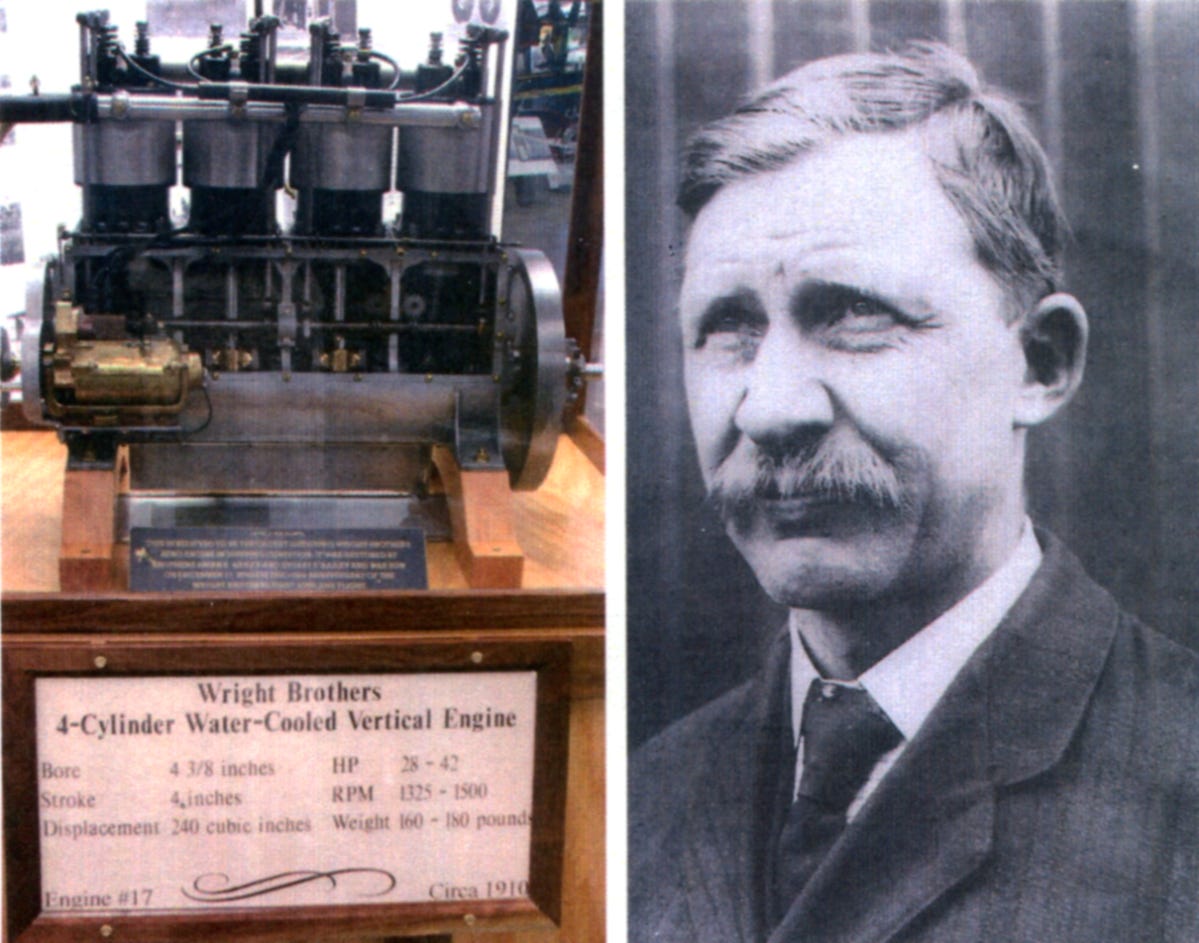
“Using data from their innovative wind tunnel tests, the Wrights realized that aircraft propellers should be shaped more like a wing, or airfoil, as opposed to a screw. They found that propeller blades act much like a rotating wing, but instead of creating lift, the spinning blades displace air backward to produce forward thrust. The Wrights also came up with the idea of adding a twist along the length of each propeller blade, which gave the blades a more consistent angle of attack with each rotation.”
The real breakthrough was the Wright’s creation of a three axis control system which enabled the pilot to steer the aircraft and to maintain its equilibrium. This method remains standard on fixed-wing aircraft of all kinds.
This differed from other experimenters who put more emphasis on powerful engines. Using their wind tunnel, the Wrights collected more accurate data than any before. Their first U.S. patent did not claim invention of a flying machine, but rather of a system of aerodynamic control that manipulated a flying machine's surfaces.
The brothers went on to fly more advanced aircraft and won the admiration and affection of much of France and America in exhibition flights. Soon they were heralded around the world as the true pioneers of manned, powered flight.
Wilbur became sick from eating bad shellfish in Boston and weeks later died at his home in Dayton, on May 30, 1912. He was 45.
Orville died of a heart attack at age 76, on January 30, 1948. He once flew in a Lockheed Constellation piloted by Howard Hughes and commented that the plane’s wingspan was longer than his first flight.
Today the same principles of flight devised by the Wright brothers still apply to the aircraft soaring above us.
Ailerons on both wings control the ROLL of an airplane.
Rudders on the tail control the YAW.
Elevators on the tail control the PITCH.
It is hard to imagine someone working all this out physically at the risk of being killed but that’s what those two actually did. And that’s why they were so painstakingly methodical.
So the next time you are riding comfortably at 37,000 feet above the earth and you look out the window and see the wing remember that controls built into that wing are what got you up there and will also land you safely back down to Earth.
And you can thank Orville and Wilbur.
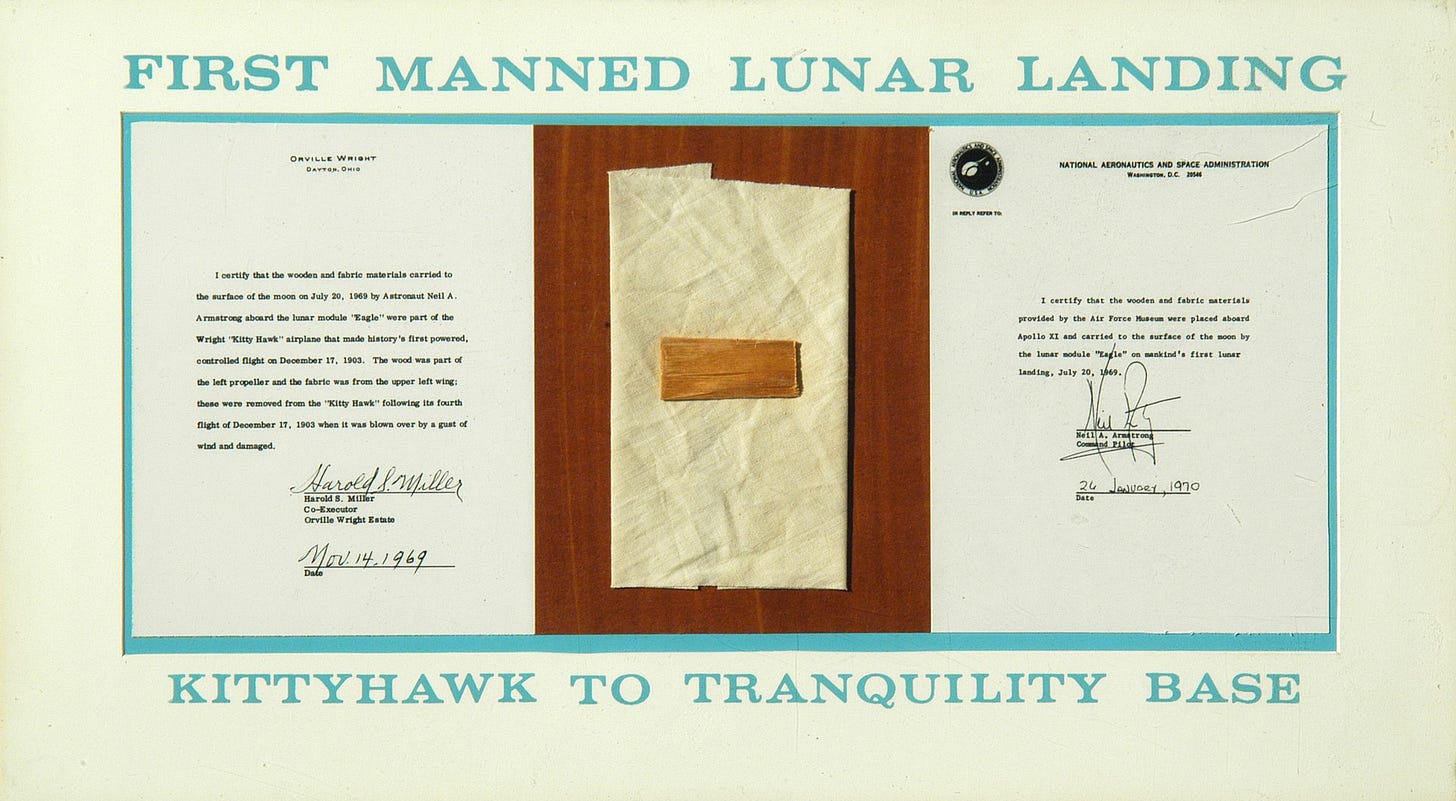
Below the line is a really good little recipe for a mushroom side dish which is perfect for Thanksgiving. It’s yours by becoming a paid subscriber. I VERY MUCH hope you’ll do that because it is the only thing that makes this weekly edition possible. Please help.
Keep reading with a 7-day free trial
Subscribe to Eat Your History to keep reading this post and get 7 days of free access to the full post archives.







